In the heart of Gujarat, the Champaner-Pavagadh Archaeological Park stands as a treasure of history and spirituality. This special place gained UNESCO World Heritage recognition in 2004, underlining its timeless importance.
The park’s embrace encompasses diverse faiths. From the 16th-century Masjids to the remains of a Jain Temple from the 13th to 14th century, and the Hindu Kalikamata Temple atop Pavagadh Hill, it’s a portrait of cultural and religious unity.
My journey here, though unplanned and brief, left a mark. I explored Saher ki Masjid and Jami Masjid, feeling the resonance of devotion and history. But the park holds more treasures than I could uncover then. I remember childhood days when accompanied by my parents, I roamed this wonderland during one-day trips.
This place’s appeal has stayed with me. I wish to return, explore the secret corners, and listen to the stones tell stories from the past.
Table of Contents
Historical Significance Champaner-Pavagadh Archaeological Park
At the heart of champaner pavagadh archaeological park stands Pavagadh Hill, a towering volcanic creation that holds secrets from ages past. This park is like a time-travel journey, with traces from prehistoric times to the magical medieval era. It’s a blend of the 14th-century Hindu capital and the 15th-century Islamic state capital, coexisting in harmony.
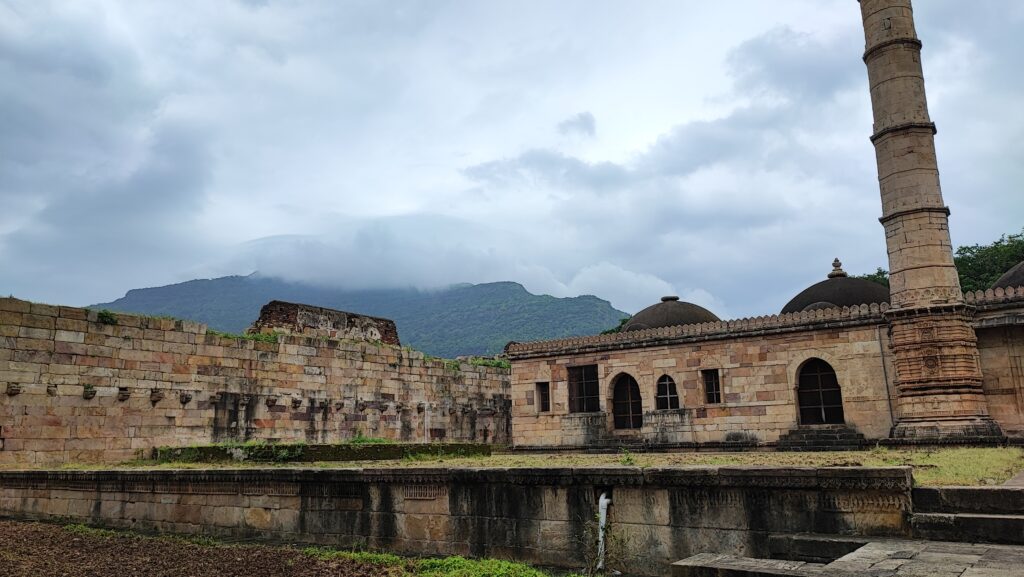

The park, sprawling across 12 distinct areas, is a living canvas of history. Among its treasures are fortifications, palaces, religious sanctuaries, homes, and incredible water-retaining structures. The village of Champaner thrives here, a living part of the heritage.
The city got its name from Vanaraj Chavda of Ahilwada Patan. The Khichi Chauhan Rajputs conquered the land centuries ago, leaving their footprints on Pavagadh Hill and the plateau below. Temples and water systems speak of their legacy.
Fast forward to the 15th century when Turkish rulers took charge, and Sultan Mehmud Begda’s vision revived the city. Champaner, at the hill’s base, bloomed as the capital of Gujarat until 1536, when it faded into silence.
Yet, amidst these echoes of the past, the temple of Kalika Mata atop Pavagadh Hill breathes with life. Devotees from all corners make pilgrimages here, weaving their stories into the fabric of this ancient place.
Architectural Marvels
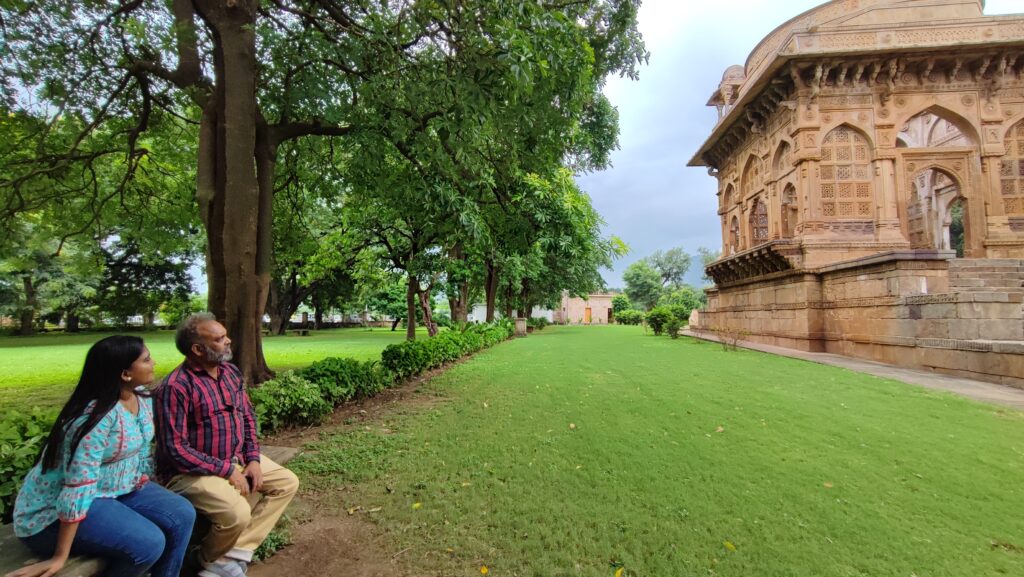

Champaner-Pavagadh’s enchanting history is unearthed through excavations that breathe life into the past. The royal citadel, Hissar-i-Khas, and Amir Manzil emerge as symbols of past grandeur. The city’s fortifications stretched from Vada Talao to Halol, safeguarding against potential threats.
Religious structures like Shahar-ki-Masjid hold immense significance, while mausoleums of Sakar Khan and Sikandar Khan carry the essence of lives once lived. Ingenious water-harvesting systems, including the helical stepwell, showcase the brilliance of the people.
On Pavagadh Hill, remnants near Atak Gate reveal military strategies that fortified the city. Beyond defense, Champaner’s story includes sarais, markets, and the Kabutarkhana leisure pavilion.
These archaeological insights craft a vivid past, bridging the gap between history and our present. Champaner Pavagadh Archaeological Park becomes a living tapestry of bygone eras, adorned with structures that whisper tales of times long gone.
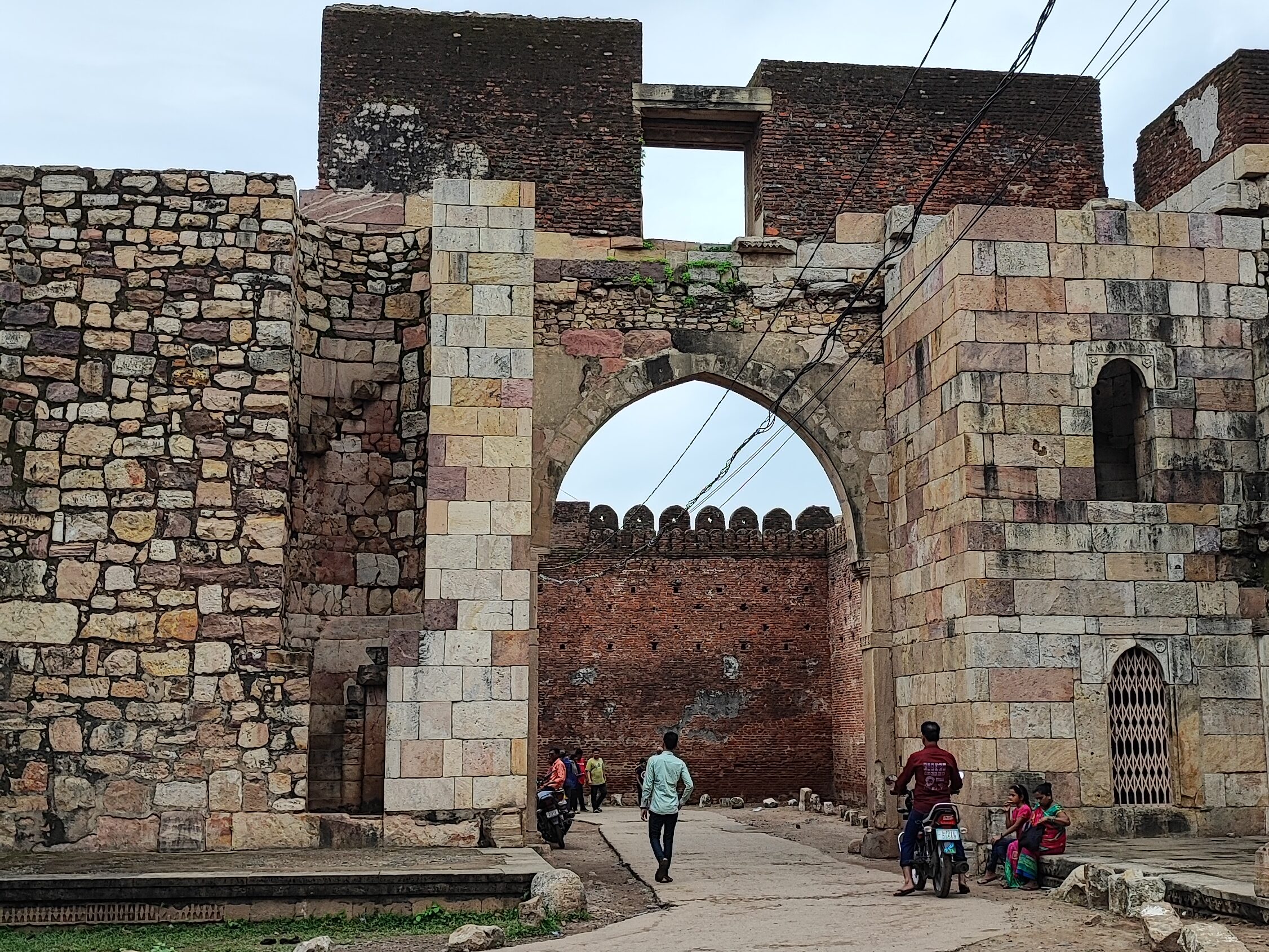

Monuments That Whisper History:
- Shahar-Ki Masjid: A sanctuary for royalty, its intricate design reflects devotion.
- Mandiv: Echoing ancient prayers, it’s a glimpse into Champaner’s spiritual heart.
- Three Cells: Simple and captivating, these spaces offer a window to daily life.
- Kabutar Khana Pavilion: Where leisure met panoramic vistas of Vada Talao and Pavagadh Hill.
- Khajuri Masjid: Intricate carvings and graceful arches epitomize architectural brilliance.
- Kevda Masjid: Blending faith and design, invites serenity and exploration.
- Nagina Masjid: A delicate oasis of tranquility, crafted with devotion.
- Jami Masjid: The Great Mosque’s grandeur mirrors faith and unity across time.
- Sakar Khan’s Tomb: A poignant Remnant, honoring lives that shaped history.
- Ek-Minar-Ki Masjid: A single-minaret marvel, reflecting diverse architectural styles.
- Sath Kaman: A recent addition, this structure with seven arches adds to Champaner’s allure.
These monuments aren’t just structures; they’re chapters in Champaner’s tale. Explore, and let their stones weave stories of those who once tread these paths. Lets deep dive into Shaer ki Masjid and the Jami Masjid
Shaher-Masjid
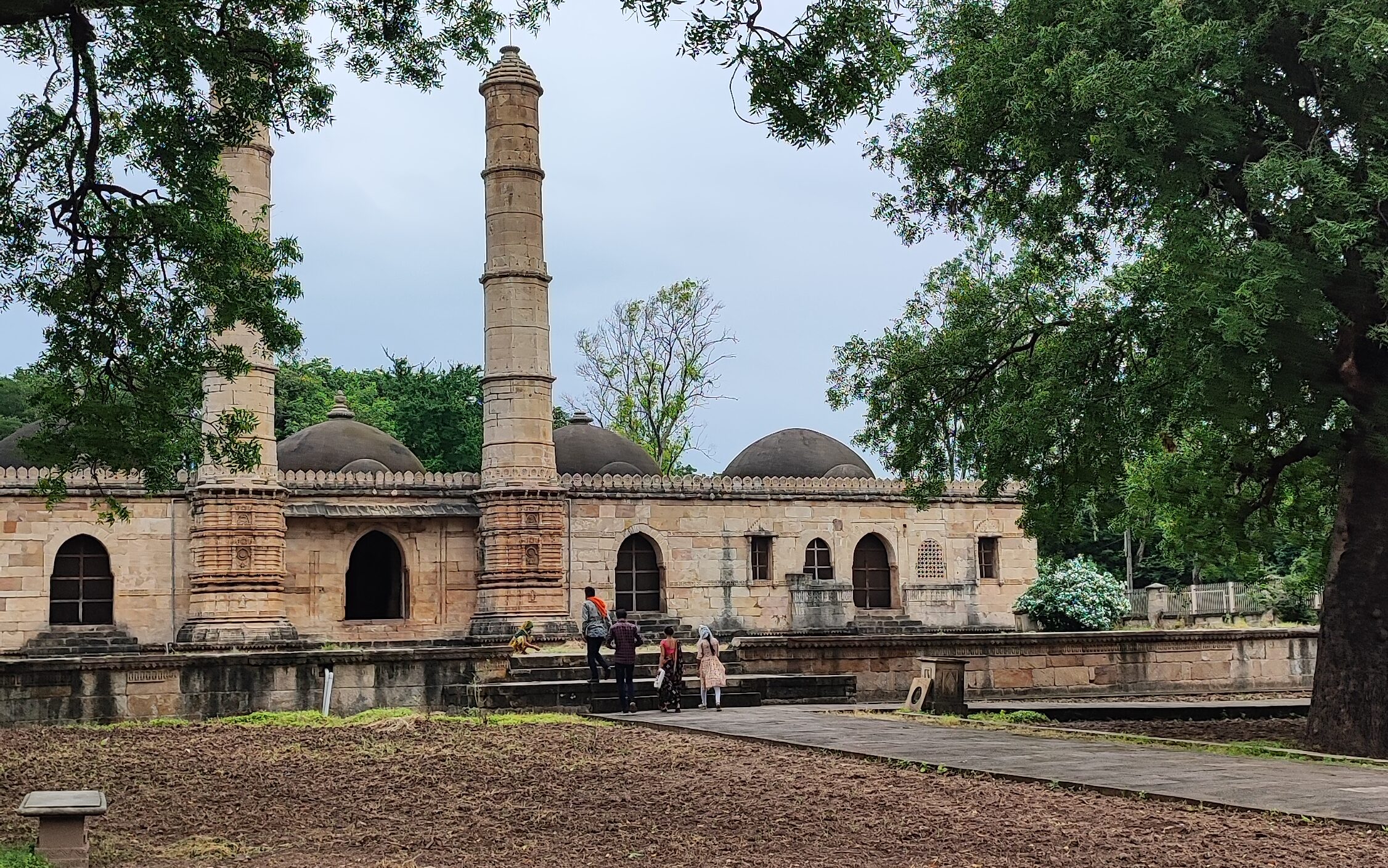

Shahar ki Masjid, known as the Mosque of the City, holds a captivating story behind its name. Contrary to its title, it wasn’t a mosque for the public, but a private haven for the royal family. Its name stems from its position within the city walls.
Built in the 16th century, this mosque stands on a raised platform, akin to its counterparts in the vicinity. The prayer hall boasts 5 mihrabs and domes, each entrance adorned with ornate jharokhas. Among the five entrances, the central one stands tall, flanked by two imposing pillars.
Jami Masjid
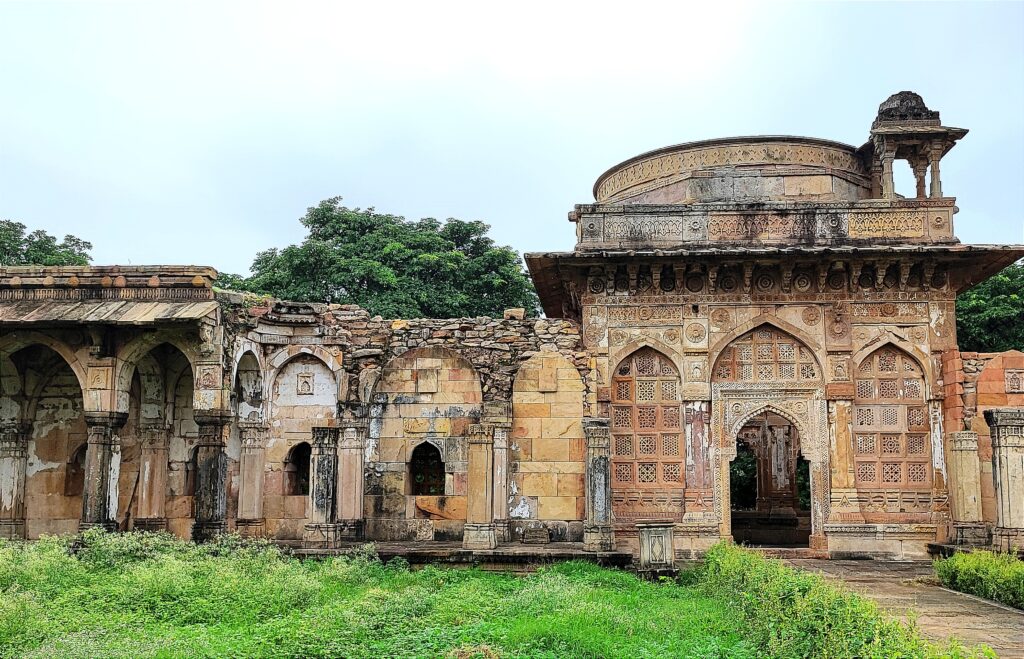

Jami Masjid, also known as Jama Masjid, stands proudly in Champaner, Gujarat, within the Champaner-Pavagadh Archaeological Park—a UNESCO World Heritage Site. Constructed in 1513 by Sultan Mahmud Begada, this mosque is a blend of Islamic and Hindu influences.
Situated about 150 feet east of the city walls, near the east gate, Jami Masjid boasts a two-story structure adorned with elegant decorations. Its entrance is on the east side, featuring a portico and a grand dome atop a podium. Tall octagonal minarets on both sides of the entryway and exquisite oriel windows with detailed carvings distinguish the mosque’s construction.
Inside, the mosque amazes with multiple prayer halls supported by nearly 200 pillars. The central prayer hall features eleven domes, with the ruler’s prayer area separated by jalis, and delicate stone screens. A double clerestory graces one dome, adding to its splendor. The interior also houses distinct features like arcuate maqsurah screens, trabeate hypostyle lawns, and zanana enclosures.
Jami Masjid is a testament to the craftsmanship of its time, blending different architectural styles to create a masterpiece that resonates with history and spirituality.
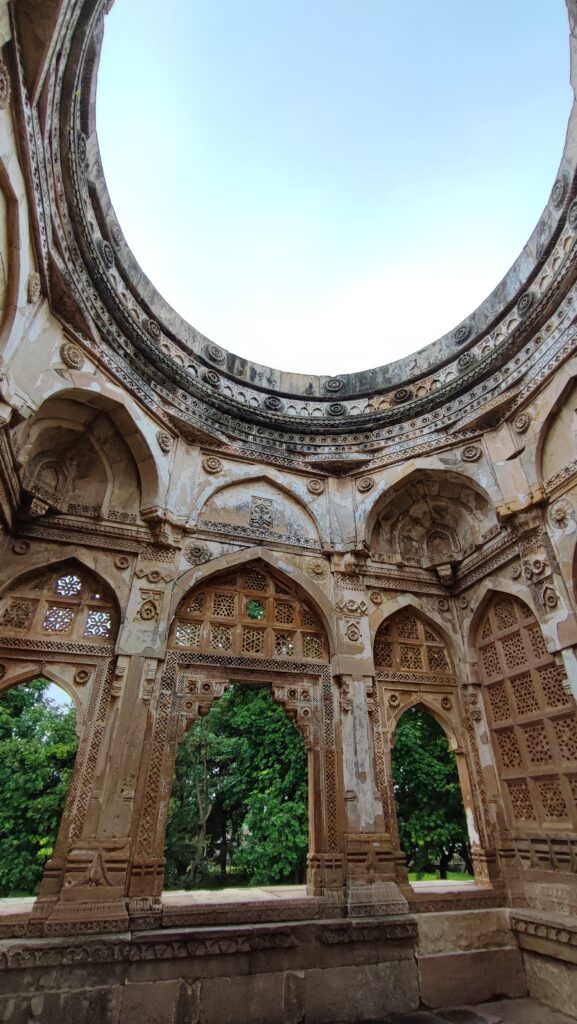

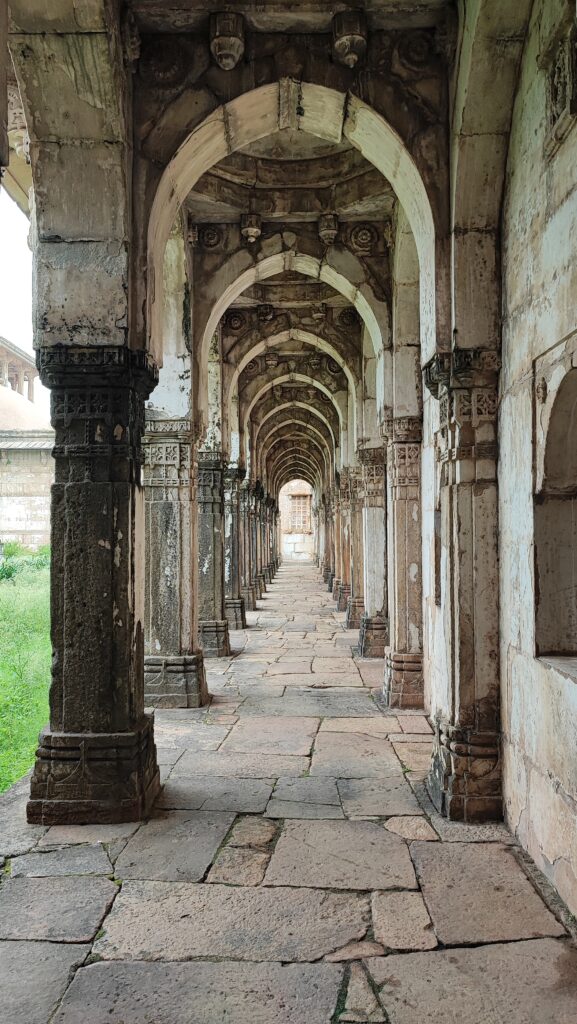

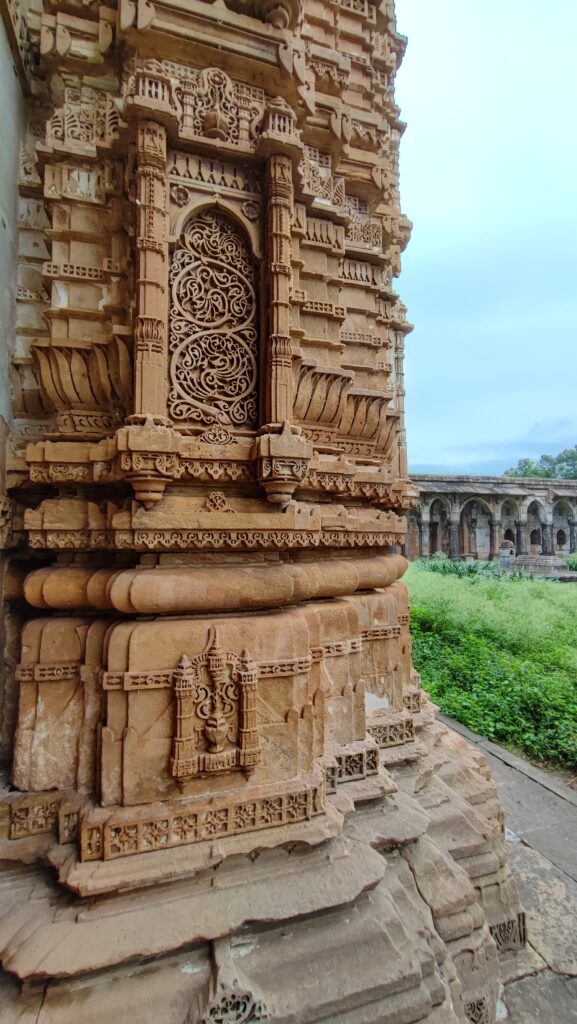

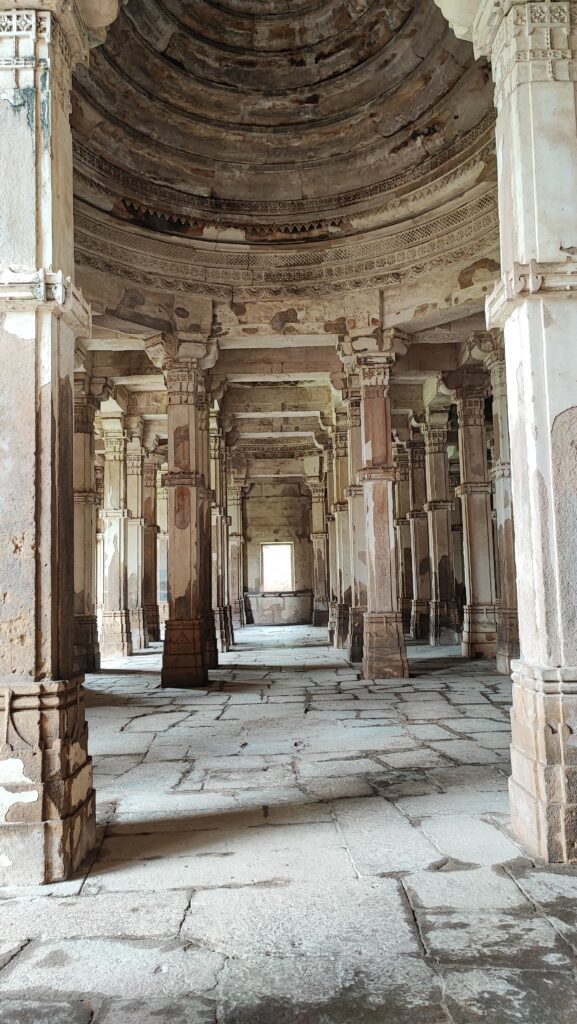

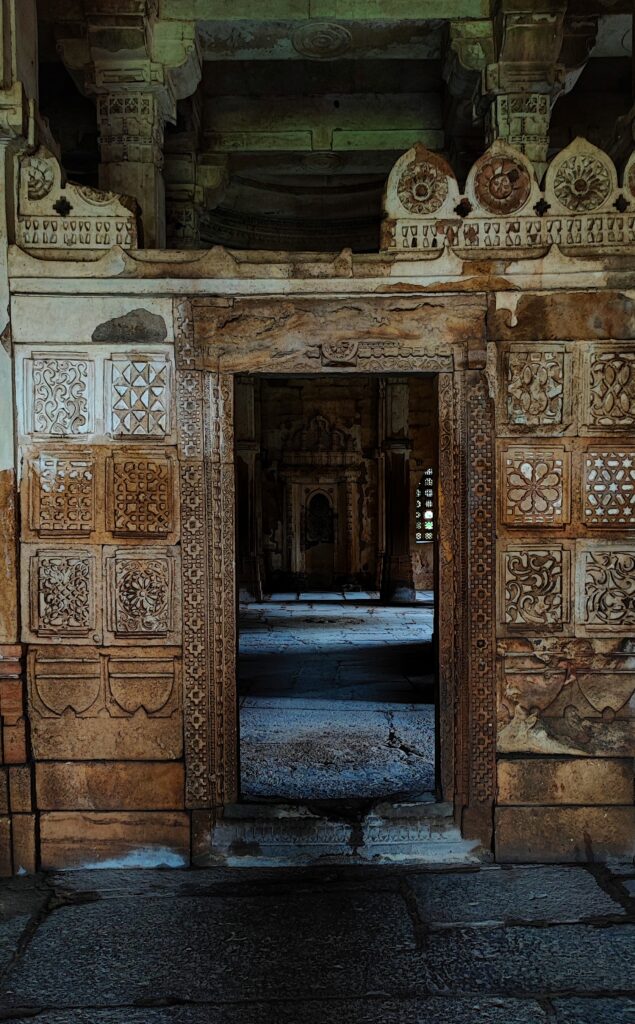

How to reach
Champaner is well-connected, ensuring a hassle-free journey. The town has its own railway station, offering convenient access. Alternatively, you can reach the nearest major railway station and airport, located in Vadodara. From Vadodara, you have options—you can book a comfortable AC or non-AC cab, or choose a GSRTC bus from the central bus station.
If you’re residing in Ahmedabad, Anand, Vadodara, Nadiad, or Bharuch, driving to Champaner is a great choice. The town enjoys good road connectivity, making it a pleasant road trip. Whether by rail or road, Champaner’s wonders await your visit.
Tips for Visitors
Maximize your visit by wearing comfortable attire, and staying hydrated, you can also carry some food packets or ready-to-eat meals and respect the site’s sanctity. Engage with local people for deeper insights.
Time to visit
The best time to visit Champaner-Pavagadh Archaeological Park is during the monsoon or winter. The park’s open setting can be tiring in the summer heat, hindering your enjoyment. But in monsoon and winter, you can also see nearby waterfalls and clouds touching Pavagadh Hill, making your experience even better. So, come during these times when the weather is pleasant and enjoy the beauty of the park and its history.
Timings and Fare
| Category | Offline price in INR |
|---|---|
| Indian | 40 Rs. |
| Foreigner | 600 Rs. |
Preserving the Heritage
Preserving heritage is akin to safeguarding a treasure trove of stories and culture, a duty we must uphold. Let’s ensure that the marvels of Champaner-Pavagadh Archaeological Park keep inspiring generations ahead. As custodians of this legacy, it’s our responsibility to tread lightly, avoid littering, and follow regulations that safeguard this historical treasure. By doing so, we can ensure the echoes of the past resonate through time, allowing everyone to experience and appreciate the rich history they hold.
Champaner-Pavagadh Archaeological Park offers a transformative journey through time. Please do have a visit and Embrace the essence of ancient India while cherishing its cultural and architectural splendor.
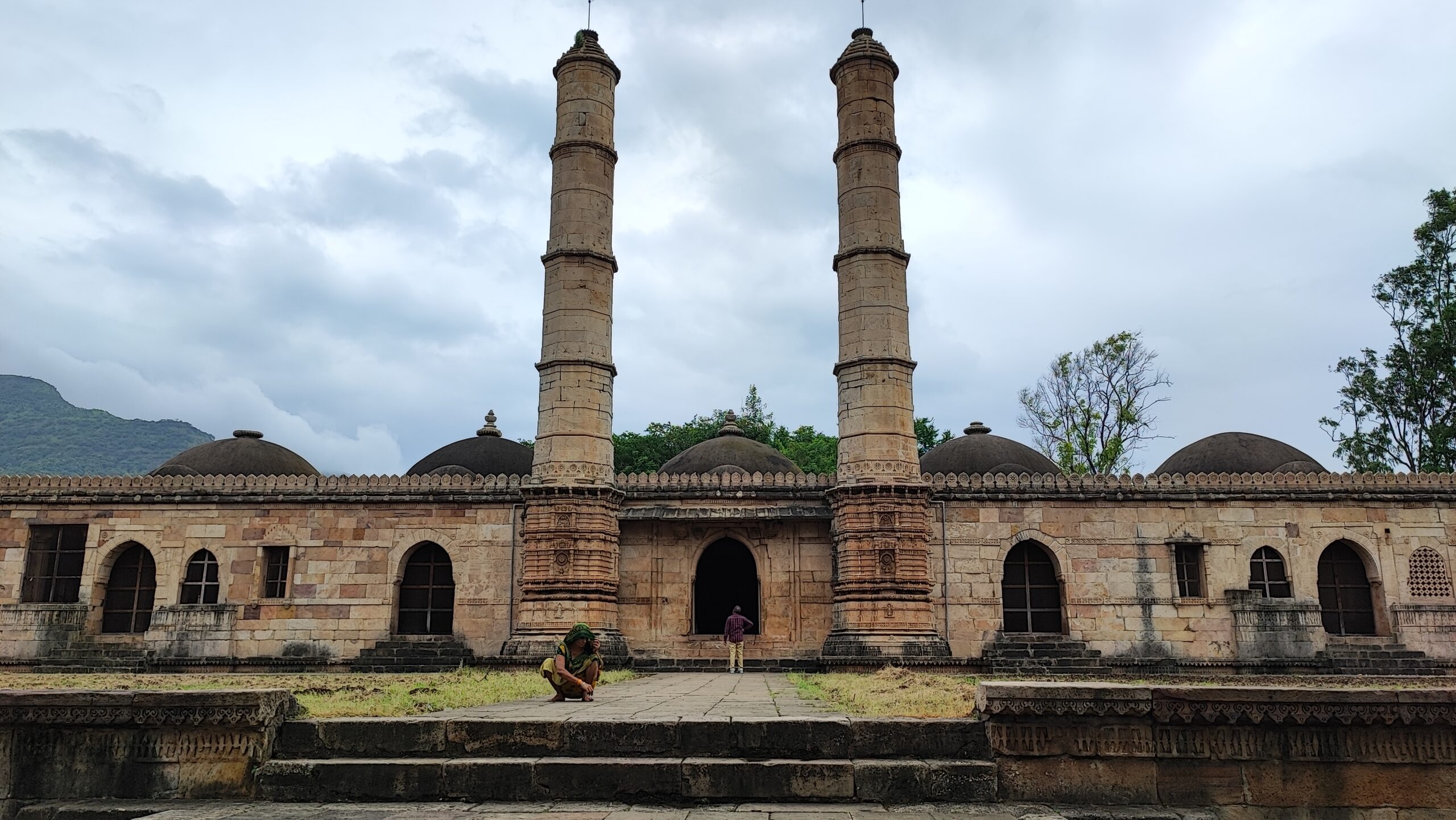
Good, keep it up
Thank You